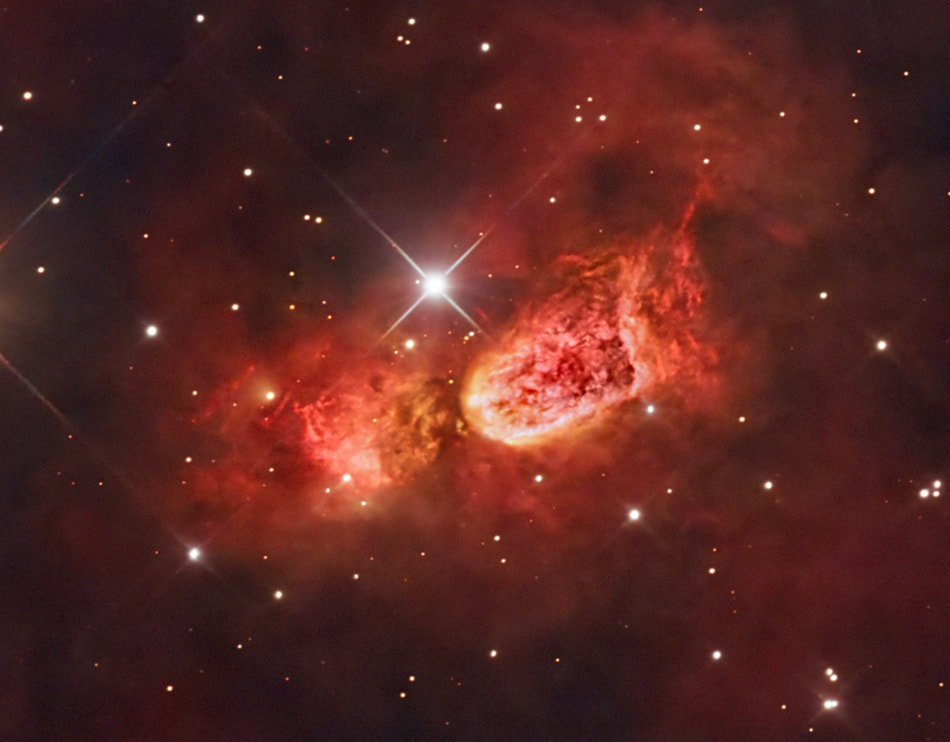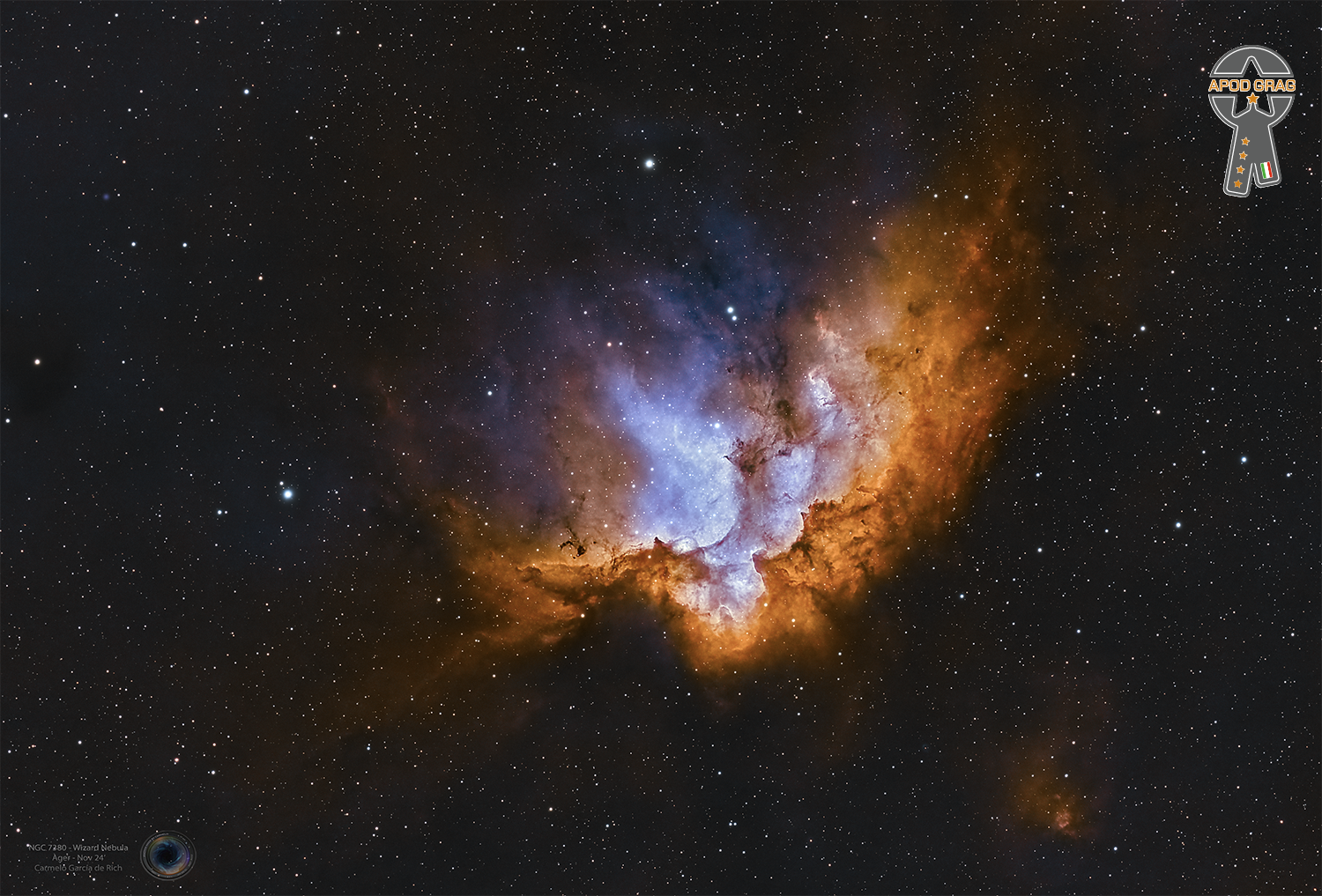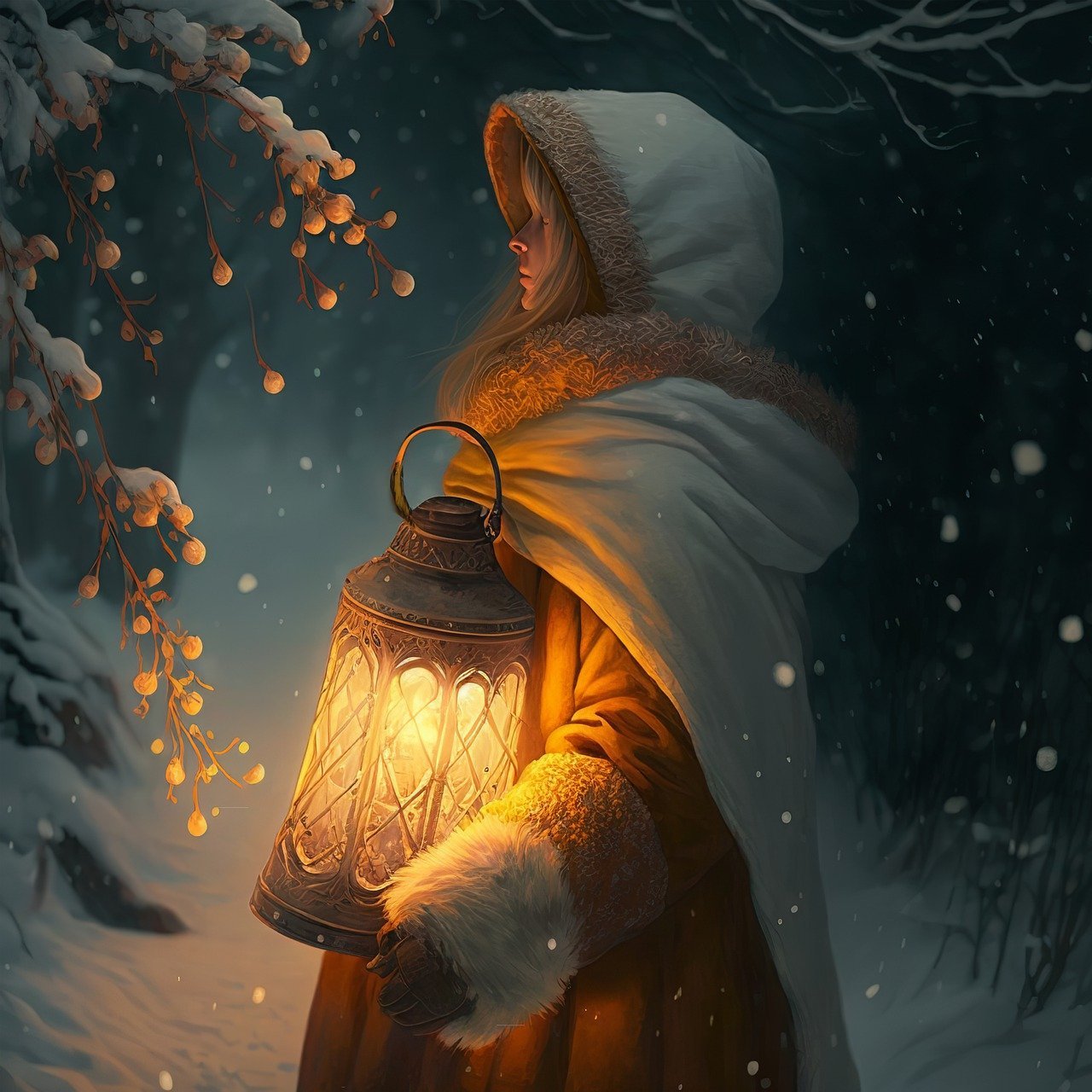Blog
Ronald Ball (December 22, 1927 – October 1984) was an English jazz pianist, composer and arranger. n the early 1950s Ball worked both as a bandleader and under Ronnie Scott, Tony Kinsey, Victor Feldman, and Harry Klein. In 1952, he moved to New York City and studied with Lennie Tristano. At the time, it was his ambition to learn more about the American jazz scene and in the 1950s and 1960s he worked extensively with other jazz musicians. Among the musicians Ball performed with are Chuck Wayne (1952), Dizzy Gillespie, Lee Konitz (1953–55), Kenny Clarke, Hank Mobley, Art Pepper, J.J. Johnson (1956), Kai Winding (1956, 1958), Warne Marsh,(1956–57), Buddy Rich (1958), Gene Krupa (1958), Roy Eldridge (1959) and Chris Connor (1961–63).
more...Sh 2-106, also known as the Celestial Snow Angel, is an emission nebula and a star formationregion in the constellation Cygnus. It is a H II region estimated to be around 2,000 light years (600 pc) from Earth, in an isolated area of the Milky Way. Adam Block pic.

John Josephus Hicks Jr. (December 21, 1941 – May 10, 2006) was an American jazz pianist, composer, and arranger. He was leader of more than 30 recordings and played as a sideman on more than 300.
After early experiences backing blues musicians, Hicks moved to New York in 1963. He was part of Art Blakey‘s band for two years, accompanied vocalist Betty Carter from 1965 to 1967, before joining Woody Herman‘s big band, where he stayed until 1970. Following these associations, Hicks expanded into freerbands, including those of trumpeters Charles Tolliver and Lester Bowie. He rejoined Carter in 1975; the five-year stay brought him more attention and helped to launch his recording career as a leader. He continued to play and record extensively in the United States and internationally. Under his own leadership, his recordings were mostly bebop-influenced, while those for other leaders continued to be in a diversity of styles, including multi-year associations with saxophonists Arthur Blythe, David Murray, David “Fathead” Newman, and Pharoah Sanders.
more...Travis Leonard Blaylock (December 21, 1934 – June 16, 1984 Texarkana, TX), better known as Harmonica Slim, was an American blues harmonicist, singer and songwriter. He had some commercial success in the 1950s; recordings of two songs he wrote, “Mary Helen” and “You Better Believe It” (both 1956), were modest hits. He released a total of six singles and toured alongside Percy Mayfield, Harmonica Fats, B.B. King, T-Bone Walker, Pee Wee Crayton and Ray Charles. His debut album was released in 1969. By the late 1970s, he had stopped playing the blues.
He is not to be confused with (as he has been in some sources) two other similarly named artists, James Isaac Moore (better known as Slim Harpo) and Richard Riley Riggins (1921–2003).
more...Francisco Sánchez Gómez ( 21 December 1947 – 25 February 2014), known as Paco de Lucía ), was a Spanish virtuoso flamenco guitarist, composer, and record producer. A leading proponent of the new flamenco style, he was one of the first flamenco guitarists to branch into classical and jazz. Richard Chapman and Eric Clapton, authors of Guitar: Music, History, Players, describe de Lucía as a “titanic figure in the world of flamenco guitar”,and Dennis Koster, author of Guitar Atlas, Flamenco, has referred to de Lucía as “one of history’s greatest guitarists”.
De Lucía was noted for his fast and fluent picados (fingerstyle runs). A master of contrast, he often juxtaposed picados and rasgueados (flamenco strumming) with more sensitive playing and was known for adding abstract chords and scale tones to his compositions with jazz influences. These innovations saw him play a key role in the development of traditional flamenco and the evolution of new flamenco and Latin jazz fusion from the 1970s. He received acclaim for his recordings with flamenco singer Camarón de la Isla in the 1970s, recording ten albums which are considered some of the most important and influential in flamenco history.
Some of de Lucía’s best known recordings include “Río Ancho” (later fused with Al Di Meola‘s “Mediterranean Sundance“), “Entre dos aguas“, “La Barrosa“, “Ímpetu“, “Cepa Andaluza” and “Gloria al Niño Ricardo“. His collaborations with guitarists John McLaughlin, Al Di Meola and Larry Coryell in the late 1970s saw him gain wider popularity outside his native Spain. De Lucía formed the Paco de Lucía Sextet in 1981 with his brothers, singer Pepe de Lucía and guitarist Ramón de Algeciras, and collaborated with jazz pianist Chick Corea on their 1990 album, Zyryab. In 1992, he performed live at Expo ’92 in Seville and a year later on the Plaza Mayor in Madrid. He also collaborated with guitarist Juan d’Anyelica on his album Cositas Buenas. After 2004 he greatly reduced his public performances, retiring from full touring, and typically only gave several concerts a year, usually in Spain and Germany and at European festivals during the summer months.
more...Frank Vincent Zappa (December 21, 1940 – December 4, 1993 Baltimore, MD) was an American musician, composer, and bandleader. In a career spanning more than 30 years, Zappa composed rock, pop, jazz, jazz fusion, orchestral and musique concrète works; he also produced almost all of the 60-plus albums that he released with his band the Mothers of Invention and as a solo artist. His work is characterized by nonconformity, improvisation sound experimentation, musical virtuosity and satire of American culture. Zappa also directed feature-length films and music videos, and designed album covers. He is considered one of the most innovative and stylistically diverse musicians of his generation.
As a mostly self-taught composer and performer, Zappa had diverse musical influences that led him to create music that was sometimes difficult to categorize. While in his teens, he acquired a taste for 20th-century classical modernism, African-American rhythm and blues, and doo-wop music. He began writing classical music in high school, while simultaneously playing drums in rhythm and blues bands, later switching to electric guitar. His debut studio album with the Mothers of Invention, Freak Out! (1966), combined satirical but seemingly conventional rock and roll songs with extended sound collages. He continued this eclectic and experimental approach throughout his career.
Zappa’s output is unified by a conceptual continuity he termed “Project/Object”, with numerous musical phrases, ideas, and characters reappearing across his albums. His lyrics reflected his iconoclastic views of established social and political processes, structures and movements, often humorously so, and he has been described as the “godfather” of comedy rock. He was a strident critic of mainstream education and organized religion, and a forthright and passionate advocate for freedom of speech, self-education, political participation and the abolition of censorship. Unlike many other rock musicians of his generation, he disapproved of recreational drug use, but supported decriminalization and regulation.
Zappa was a highly productive and prolific artist with a controversial critical standing; supporters of his music admired its compositional complexity, while detractors found it lacking emotional depth. He had greater commercial success outside the US, particularly in Europe. Though he worked as an independent artist, Zappa mostly relied on distribution agreements he had negotiated with the major record labels. He remains a major influence on musicians and composers. His many honors include his posthumous 1995 induction into the Rock and Roll Hall of Fame and the 1997 Grammy Lifetime Achievement Award.
more...Bennie Ross “Hank” Crawford, Jr. (December 21, 1934 – January 29, 2009 Memphis, TN) was an American alto saxophonist, pianist, arranger and songwriter whose genres ranged from R&B, hard bop, jazz-funk, and soul jazz. Crawford was musical director for Ray Charles before embarking on a solo career releasing many well-regarded albums for labels such as Atlantic, CTI and Milestone.
When Crawford left Ray Charles in 1963 to form his own septet, he had already established himself with several albums for Atlantic Records. From 1960 until 1970, he recorded twelve LPs for the label, many while balancing his earlier duties as Ray’s director. He released such pre-crossover hits as “Misty“, “The Peeper”, “Whispering Grass“, and “Shake-A-Plenty”.
He also has done musical arrangement for Etta James, Lou Rawls, and others. Much of his career has been in R&B, but in the 1970s he had several successful jazz albums, with I Hear a Symphony reaching 11 on Billboard‘s Jazz albums list and 159 for Pop albums.
more...Stephen William Bragg (born 20 December 1957) is an English singer, songwriter, musician, author and political activist. His music blends elements of folk music, punk rock and protest songs, with lyrics that mostly span political or romantic themes. His activism is centred on social change and left-wing political causes.
Bragg was born in 1957 in Barking, Essex (later part of Greater London) to Dennis Frederick Austin Bragg, an assistant sales manager to a Barking cap maker and milliner, and his wife Marie Victoria D’Urso, who was of Italian descent through her father. Bragg’s father died of lung cancer in 1976, and his mother died in 2011.
Bragg was educated at Northbury Junior School and Park Modern Secondary School (now part of Barking Abbey Secondary School) in Barking. He failed his eleven-plus exam. He developed an interest in poetry at age twelve, when his English teacher chose him to read a poem he had written for a homework assignment on a local radio station. He focused on learning and practising the guitar with his next-door neighbour, Philip Wigg (Wiggy). Some of their influences were the Faces, Small Faces and the Rolling Stones. He was also exposed to folk and folk-rock music during his teenage years, citing Simon & Garfunkel and Bob Dylan as early influences on his songwriting.
During the rise of punk rock and new wave in the late 1970s, Elvis Costello also served as an inspiration for Bragg. He was particularly influenced by the Jam, as well as the Clash, whom he had seen play live in London in May 1977 on their White Riot Tour, and again at a Rock Against Racism carnival in April 1978, which he admits was the first time he really stepped into the world of music as it is used for political activism. The experience of the gig and preceding march helped shape Bragg’s left-wing politics, a change from his having previously “turned a blind eye” to casual racism.
more...Friday December 20th Hiddur Tefillah Shabbat Service 630pm at Mt Zion St Paul. Music with Jennifer Struss-Klein, Tami Morse, mick laBriola and more.
more...NGC 7380 is a young open cluster of stars in the northern circumpolar constellation of Cepheus, discovered by Caroline Herschel in 1787. The surrounding emission nebulosity is known colloquially as the Wizard Nebula, which spans an angle of 25′. German-born astronomer William Herschel included his sister’s discovery in his catalog, and labelled it H VIII.77. The nebula is known as S 142 in the 1959 Sharpless catalog (Sh2-142). It is extremely difficult to observe visually, usually requiring very dark skies and an O-III filter. The NGC 7380 complex is located at a distance of approximately 8.5 kilolight-years from the Sun, in the Perseus Arm of the Milky Way.

Alan Parsons OBE (born 20 December 1948) is an English audio engineer, songwriter, musician and record producer.
Parsons was the sound engineer on albums including the Beatles‘ Abbey Road (1969) and Let It Be(1970), Pink Floyd‘s The Dark Side of the Moon (1973), and the eponymous debut album by Ambrosia in 1975. Parsons’s own group, the Alan Parsons Project, as well as his subsequent solo recordings, have also been commercially successful. He has been nominated for 14 Grammy Awards, with his first win occurring in 2019 for Best Immersive Audio Album for Eye in the Sky (35th Anniversary Edition).
more...Lawrence Elliott Willis (December 20, 1942 – September 29, 2019) was an American jazz pianist and composer. He performed in a wide range of styles, including jazz fusion, Afro-Cuban jazz, bebop, and avant-garde.
Willis was born in New York City. After his first year studying music theory at the Manhattan School of Music he began performing regularly with Jackie McLean. After he graduated he made his first jazz recording, McLean’s Right Now! in January 1965, which featured two of Willis’ compositions. His first recording of any type, however, was as a singer with the Music and Arts Chorale Ensemble, performing an opera by Aaron Copland under the direction of Leonard Bernstein. He decided to concentrate on jazz because of the difficulties African-American musicians had in finding work in concert music.
Throughout his career he performed with a wide range of musicians, including several years as keyboardist for Blood, Sweat & Tears (beginning in 1972). He spent several years as pianist for trumpeters Nat Adderley and Woody Shaw as well as long and productive tenures with Roy Hargrove and with Jerry Gonzalez and his Fort Apache Band. His late recording with Paul Murphy, Exposé, demonstrated the fusion principles of bebop and avant-garde jazz. His composition “Sanctuary” began exploring works employing strings. After a successful performance in Frank Lloyd Wright‘s Annie Pfieffer Chapel at Florida Southern College‘s Child of the Sun Jazz Festival he was commissioned to write a full-scale orchestral work for jazz trio and orchestra. He worked with Hugh Masekela on a South African Suite of music and interpreted Miles Davis‘ work. He was in the Round About Midnight tour of Miles Davis’ music. He received the Don Redman award in 2011, and the Benny Golson Jazz Master Award at Howard University in 2012.
He died of an aneurysm in Baltimore at the age of 76.
more...More Posts
- Little Sonny Day
- World Music with Mamar Kassey
- Daily Roots with Nicodemus
- The Cosmos with NGC 1027 and IC 1805
- Clifton Anderson Day
- Jimmy Blanton Day
- World Music with Miguel de los Reyes
- Daily Roots with Yami Bolo
- The Cosmos with SPX 1062
- Eddie Gomez Day
- Steve Swallow Day
- Leon Thomas Day
- World Music with Culture Musical Club & Bi Kidude
- World Music with Culture Musical Club & Bi Kidude
- Daily Roots with Miniman
- Rhythm Roots Workshop at PRI Minneapolis 10-3-18
- The Cosmos with W 40
- Stevie Ray Vaughn Day
- Von Freeman Day
- World Music with Noe Hernandez Cantarell


